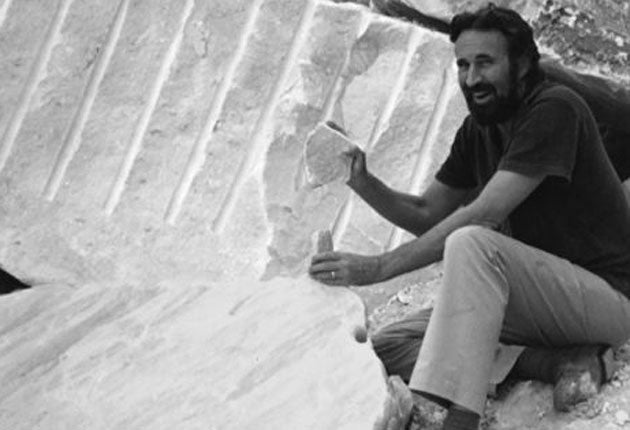Julian Andrews: British Council arts envoy who worked with Henry Moore and Richard Long

Julian Andrews was in many ways typical of his generation of employees of the British Council, where he spent almost the whole of his working life. His outgoing personality and individuality appealed to colleagues in both the Home and the Overseas Services of the Council and although his combative attitudes to excessive bureaucracy caused friction, he won the respect of everyone with whom he worked.
Although he was born in London, Andrews' childhood was spent partly in North Wales, where he and his mother retreated from the Blitz, leaving his stockbroker father behind during most of the war. On a brief return to London, Andrews watched the Battle of Britain and spent a night sheltering in Aldwych tube station, a memory revived when he later met Henry Moore.
School sparked a burgeoning gift for languages, a precious skill in his later career. After the war he went to Eastbourne College and then gained a place at Gonville and Caius College, Cambridge. But national service intervened and he spent 1952-53 as an NCO in the Royal West Kents, training recruits and guarding prisoners in a military prison, before transferring for his second year to study Russian at Cambridge. Following this he went up to Caius to read French and Russian, and Part II in the Law Tripos.
After graduating in 1957, he taught briefly at a summer school in Northern Italy and stayed on to teach at the British Institute in Turin. On his return to London, he became an assistant to the export manager at Aquascutum before taking up a year's British Council studentship in teacher training in London. His reward was the post of assistant director of studies at the Cultura Inglesa in Sao Paulo, where he spent two years developing English Language teaching along with other duties. In 1962 he met and married Baerbel Gebhardt, adopting her daughter, Monica, who died in 1973.
Back in London in 1963, Andrews was finally taken on by the British Council and following his interest in Suez was fortunate in being able to choose a posting to Egypt as a teacher trainer. In 1965 he was sent back to Brazil as regional director in Curitiba, where he stayed for four years running the language school. His next posting was at headquarters in London as head of Overseas Section and Personnel Department. Where selection of suitable men and (sometimes) women for arduous posts overseas was crucially important, Andrews' flair and judgement were invaluable.
In 1973 Julian, with his family, by then a son and two daughters, was posted to Milan as Regional Director North Italy, where there existed a well-established setting for both educational and arts work by the Council. There, in addition to managing language teaching, he was able to maximise the Council's impact in the arts and build on the Italian appetite for music, drama and visual arts events from Britain. Among his most successful projects during this posting was the exhibition Arte Inglese Oggi, held in 1976 in the Palazzo Reale, and organised in collaboration with Visual Arts Department in London, with work by 50 prominent British artists. Later in the same year he managed the British representation at the Venice Biennale, when the sculptor Richard Long was selected as the British artist.
In 1979 he was delighted with the offer of the post of Director Fine Arts in London, preceded by a year's training at the Courtauld Institute of Art. While this was in effect a dream posting, Julian was initially apprehensive at the prospect of heading a specialist department regarded by the rest of the British Council as a bunch of mavericks, but his work in Milan had earned him respect within the department.
During his service in the fine arts department, Julian worked with Henry Moore on exhibitions worldwide, and supervised the department's role in the landmark Treasures of Britain exhibition in Washington. His involvement with the Council of Europe led to the award of its Cultural Medal in recognition of his work on the standards of exhibition management.
Julian's final posting was to the Netherlands in 1986, where he remained until his retirement in 1994 to a village near Harlech in North Wales. His publications include The Sculpture of David Nash (1999), The Shelter Drawings of Henry Moore (2002), and earlier, Sutherland: Disegni di Guerra with Roberto Tassi in 1982.
Julian Andrews, arts envoy: born Holloway, London 11 February 1934; married firstly 1962 Baerbel Gebhardt (one son, one daughter), 1997 Tricia Halliwell (one adopted daughter); died Llanbedr, Gwynedd 4 May 2010.
Join our commenting forum
Join thought-provoking conversations, follow other Independent readers and see their replies
Comments